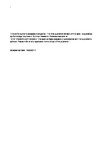Dietary nitrate and blood pressure: evolution of a new nutrient?
| dc.contributor.author | Bescos Garcia, Raul | |
| dc.contributor.author | Ashworth, A | |
| dc.date.accessioned | 2017-05-08T09:20:36Z | |
| dc.date.available | 2017-05-08T09:20:36Z | |
| dc.date.issued | 2017-02-19 | |
| dc.identifier.issn | 0954-4224 | |
| dc.identifier.issn | 1475-2700 | |
| dc.identifier.uri | http://hdl.handle.net/10026.1/9197 | |
| dc.description.abstract |
<jats:title>Abstract</jats:title><jats:p>Dietary nitrate is mainly obtained from vegetables, especially green leafy vegetables and beetroot. As a result of early research, dietary nitrate is currently viewed as a contaminant linked to increased risks of stomach cancer and methaemoglobinaemia. Consequently, nitrate levels are restricted in certain vegetables and in water supplies to ensure exposure levels remain below an acceptable daily intake of 3·7 mg/kg per d. The average nitrate intake in the UK is approximately 70 mg/d, although some population groups, such as vegetarians, may consume three times that amount. However, recent studies in the last decade suggest that dietary nitrate can significantly reduce systolic blood pressure via the nitrate–nitrite–NO pathway. A small, downward shift in systolic blood pressure across the population could significantly reduce the incidence of hypertension and mortality from CVD such as stroke. Interestingly, vegetarians tend to have lower levels of blood pressure than omnivores and epidemiological studies suggest that vegetarians have lower risks of CVD. Recent evidence is mainly focused on the acute effects of dietary nitrate supplementation and there is a lack of data looking at the chronic effects of high nitrate consumption in humans. Nevertheless, due to potential health benefits, some authors are recommending that nitrate should be considered as a nutrient necessary for health, rather than as a contaminant which needs to be restricted. This review will discuss the emerging role of dietary nitrate in the control of blood pressure and whether there is sufficient evidence to state that nitrate is a ‘new’ nutrient.</jats:p> | |
| dc.format.extent | 208-219 | |
| dc.format.medium | Print-Electronic | |
| dc.language | en | |
| dc.language.iso | en | |
| dc.publisher | Cambridge University Press (CUP) | |
| dc.subject | Dietary nitrate | |
| dc.subject | Nitrite | |
| dc.subject | Nitric oxide | |
| dc.subject | Green leafy vegetables | |
| dc.subject | Blood pressure | |
| dc.subject | Stroke | |
| dc.subject | CVD | |
| dc.title | Dietary nitrate and blood pressure: evolution of a new nutrient? | |
| dc.type | journal-article | |
| dc.type | Journal Article | |
| dc.type | Review | |
| plymouth.author-url | https://www.webofscience.com/api/gateway?GWVersion=2&SrcApp=PARTNER_APP&SrcAuth=LinksAMR&KeyUT=WOS:000416131600003&DestLinkType=FullRecord&DestApp=ALL_WOS&UsrCustomerID=11bb513d99f797142bcfeffcc58ea008 | |
| plymouth.issue | 2 | |
| plymouth.volume | 30 | |
| plymouth.publication-status | Published | |
| plymouth.journal | Nutrition Research Reviews | |
| dc.identifier.doi | 10.1017/S0954422417000063 | |
| plymouth.organisational-group | /Plymouth | |
| plymouth.organisational-group | /Plymouth/Faculty of Health | |
| plymouth.organisational-group | /Plymouth/Faculty of Health/School of Health Professions | |
| plymouth.organisational-group | /Plymouth/REF 2021 Researchers by UoA | |
| plymouth.organisational-group | /Plymouth/REF 2021 Researchers by UoA/UoA03 Allied Health Professions, Dentistry, Nursing and Pharmacy | |
| plymouth.organisational-group | /Plymouth/Research Groups | |
| plymouth.organisational-group | /Plymouth/Research Groups/Institute of Health and Community | |
| plymouth.organisational-group | /Plymouth/Research Groups/Plymouth Institute of Health and Care Research (PIHR) | |
| plymouth.organisational-group | /Plymouth/Users by role | |
| plymouth.organisational-group | /Plymouth/Users by role/Academics | |
| dc.publisher.place | England | |
| dcterms.dateAccepted | 2017-02-19 | |
| dc.identifier.eissn | 1475-2700 | |
| dc.rights.embargoperiod | No embargo | |
| rioxxterms.versionofrecord | 10.1017/S0954422417000063 | |
| rioxxterms.licenseref.uri | http://www.rioxx.net/licenses/all-rights-reserved | |
| rioxxterms.licenseref.startdate | 2017-02-19 | |
| rioxxterms.type | Journal Article/Review |


